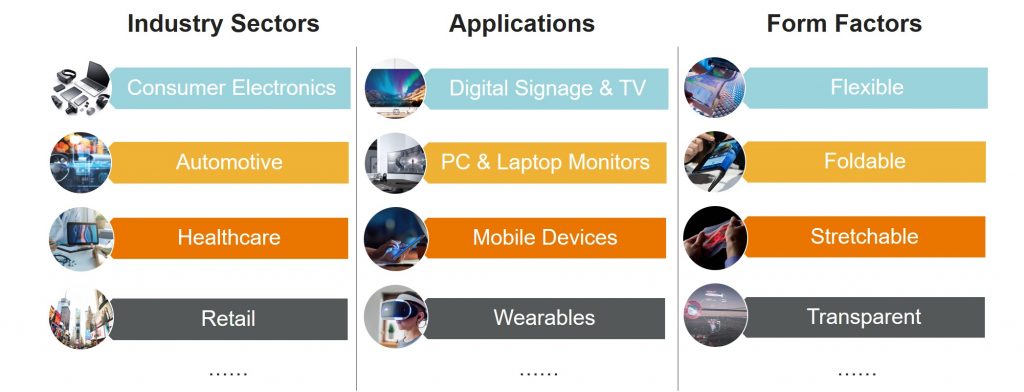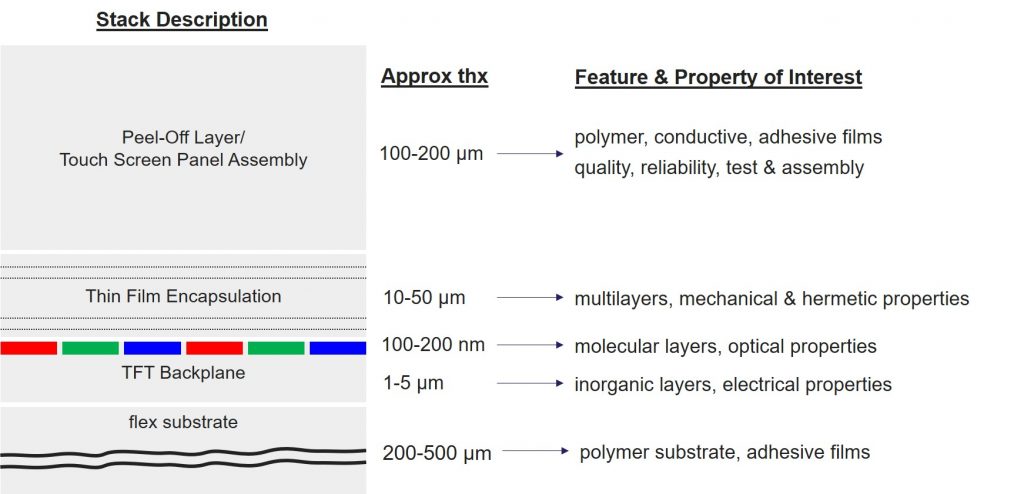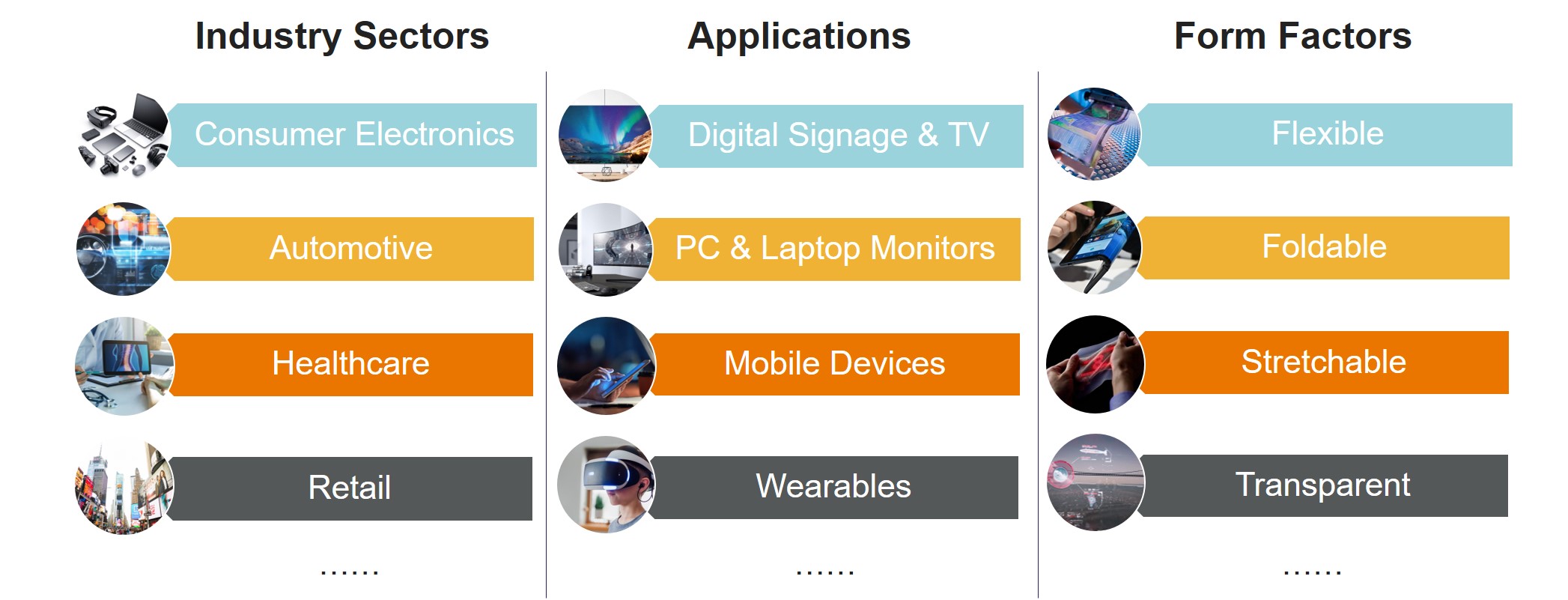DAVID AKERSON, Sr. Global Marketing Manager, Thermo Fisher Scientific
The phrase “information display technology” applies to a broad spectrum of devices. From smartwatches to foldable phones, interactive screens in automobiles to outdoor digital signage and billboards in cities and stadiums around the word, display technology is ever present in our lives.
Across multiple industry sectors, applications and form factors are providing new opportunities and challenges for display manufacturers (FIGURE 1). Opportunities include an expanding array of new use cases for display technologies, while challenges include enhancing current technologies to deliver ever-better picture quality: resolution, refresh rate, color gamut, luminance, contrast ratio, and developing the next generation of display technology. As display technologies move forward, achieving next-generation performance will require innovation in areas such as backplane technology and light-conversion efficiency.

Within the display industry, the path forward passes through mainstream, future and exploratory technologies. Today’s mainstream is populated with liquid-crystal display (LCD) and active matrix organic light-emitting diode (AMOLED) technologies with many applications transitioning from LCD to AMOLED. To compete with the image quality of AMOLED, many LCD manufacturers have developed quantum-dot LED (QLED) and mini-LED. Micro-OLED displays have been developed for niche applications such as virtual reality and augmented reality. Looking to the future, display manufacturers are making investments in technologies such as Red-Green-Blue (RGB) chip micro-LED and electroluminescent QLED to take displays to the next level.
For maturing and future display technologies, process metrology, failure analysis, and core-structure characterization can be the keys to accelerating research and development, enhancing yield and improving display quality. In this article, we will use a mobile device as an example to explore the challenges related to the display layers and the role process metrology, failure analysis, and core-structure characterization can play in addressing these challenges.
Understanding the display
To better understand process metrology and failure analysis challenges, it’s important to have a base understanding of the display layers. In a mobile device, the display consists of three layers: the cover glass, the touchscreen and the display panel. Of the three, the display panel is the core component and consists of the thin film encapsulation (TFE) layer, the thin-film transistor (TFT) backplane and the flex substrate. FIGURE 2 provides an example diagram of a mobile device and the layers described above and will be referred to throughout this article.

Process Metrology: Examining the Crucial Layers of Display Technology
For display manufacturers, process metrology that provides reliable and repeatable measurements is an increasingly valuable tool in identifying design and manufacturing process improvements. Click here to read the full article in Semiconductor Digest magazine.
